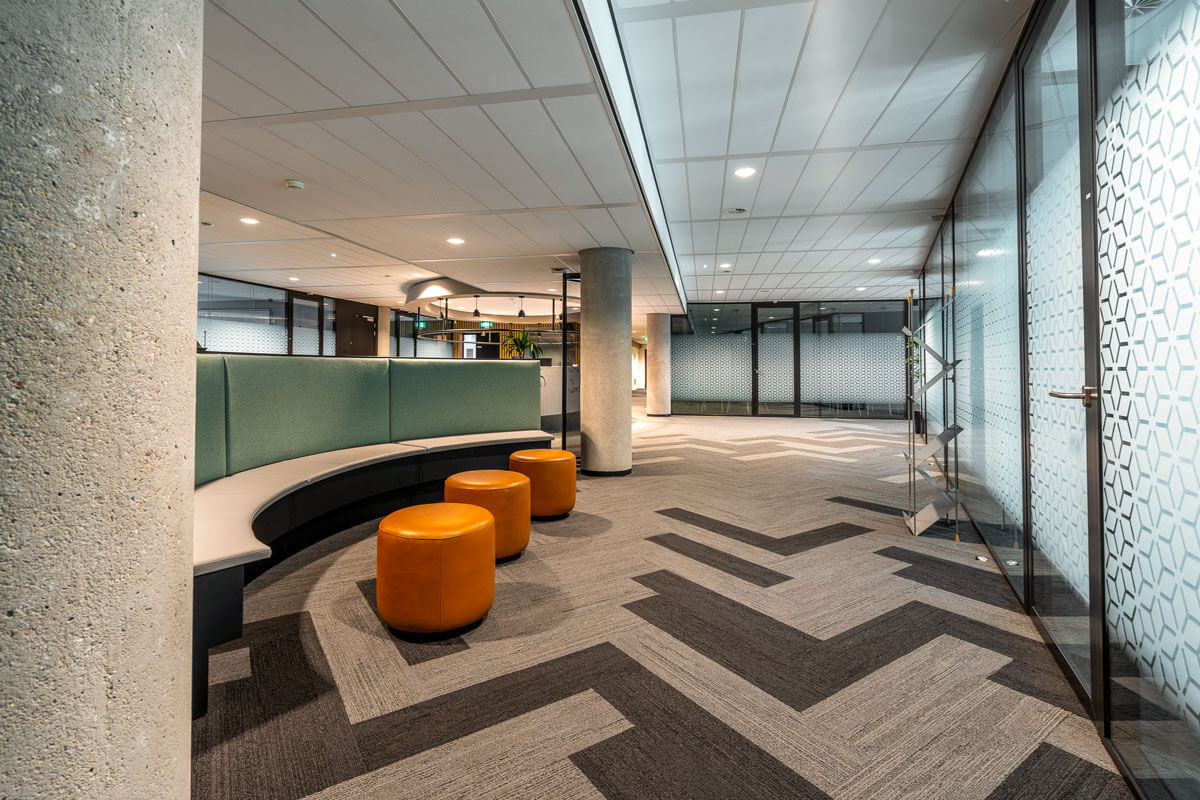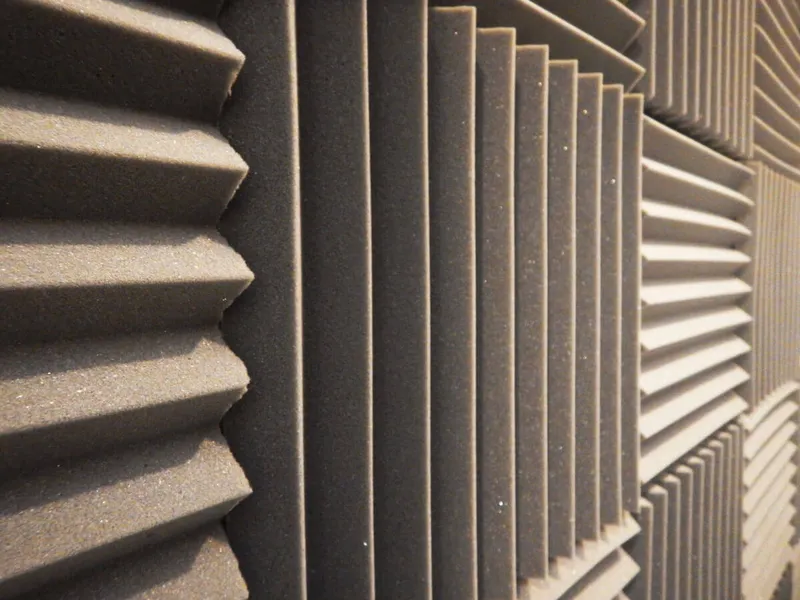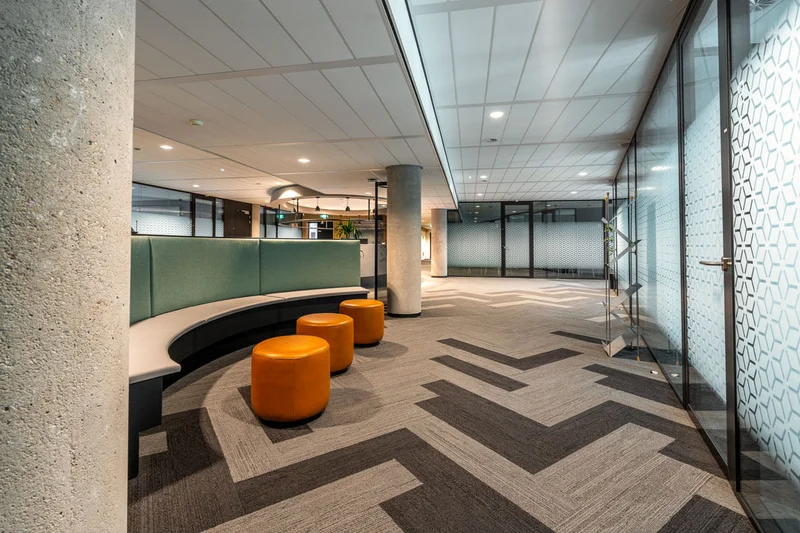
Part 1: Acoustics – Designing for Clarity, Concentration and Connection in Gold Coast Schools
This is Part 1 of our four-part series on designing effective educational environments. Read the series introduction to learn more about our approach to educational architecture across the Gold Coast.
The Sound of Learning: Why Acoustics Matter in Gold Coast Schools
In Queensland’s busy learning environments, sound shapes educational experiences in profound ways that often go unnoticed. From the subtle drone of air conditioning systems amplified by hard surfaces to the challenge of hearing instruction in large, echoing spaces — acoustic design silently influences how effectively students learn and teachers communicate each day.
Poor classroom acoustics can reduce speech intelligibility to as low as 75% for students with normal hearing. For those with even minor hearing impairments, auditory processing difficulties, or English as a second language, this figure drops dramatically, creating significant barriers to learning.
At Burleigh Beach Designs, our Gold Coast architects collaborate with education specialists to understand these acoustic challenges from all perspectives. The impact extends beyond simple distraction — noise directly affects cognitive processing, stress levels, and the physical wellbeing of both students and educators throughout Queensland schools.
Measuring the Impact of Sound on Learning

Research consistently demonstrates that poor acoustics directly impact educational outcomes in schools across Queensland and beyond. The evidence is compelling:
Cognitive Load and Comprehension
Background noise forces students to expend mental energy filtering out irrelevant sounds rather than processing information. Studies show that in noisy environments, reading comprehension can decrease by up to 25%, and mathematical performance suffers similarly as cognitive resources are diverted to auditory processing.
In Gold Coast schools, where classroom windows are often open to capture natural ventilation in our subtropical climate, external noise can become a significant factor without proper acoustic planning.
Teacher Wellbeing and Vocal Health
Teachers in acoustically poor environments frequently raise their voices, leading to vocal strain and fatigue. Research indicates that teachers are disproportionately affected by voice disorders, with 50-60% experiencing voice problems during their career — a rate significantly higher than most other professions.
For Queensland educators working in reverberant spaces, this physical strain compounds the already challenging task of maintaining student engagement in our dynamic learning environments.
Inclusive Learning Environments
Students with hearing impairments, auditory processing disorders, attention difficulties, or those learning English require optimal acoustic conditions. In reverberant or noisy classrooms, these students may miss up to 40% of verbal content, creating significant educational disadvantages.
As Gold Coast schools increasingly focus on inclusive education principles, acoustic design becomes a crucial element in creating truly accessible learning spaces for all students.
Acoustic Terminology in Educational Design
Reverberation Time (RT): The time it takes for sound to decay by 60 decibels after the source stops. In classrooms, ideal RT is 0.4-0.6 seconds. Many Queensland schools with hard surfaces and high ceilings have RT exceeding 1 second, making speech difficult to understand.
Signal-to-Noise Ratio (SNR): The difference between the teacher’s voice (signal) and background noise. An SNR of +15dB is recommended for good comprehension, meaning the teacher’s voice should be 15dB louder than ambient noise.
Sound Transmission Class (STC): Measures how well a building element (like a wall) reduces sound transmission. Higher STC ratings indicate better sound isolation between spaces.
Acoustic Design Strategies for Gold Coast School Environments

Creating acoustically effective learning environments requires a multi-faceted approach. Our Gold Coast architectural team considers these key strategies when designing Queensland educational spaces:
Strategic Spatial Planning for Sound Management

The most fundamental acoustic strategy begins with thoughtful space planning. By creating intentional acoustic zones, we can separate noisy activities from spaces requiring concentration:
- Positioning quiet learning areas away from high-traffic corridors, mechanical equipment, and noisy external areas like playgrounds or main roads
- Creating buffer zones between spaces with incompatible acoustic needs (e.g., music rooms and libraries)
- Designing spatial layouts that naturally contain and absorb sound within designated activity areas
- Considering how Queensland’s indoor-outdoor learning approach requires special acoustic transitions between environments
This strategic arrangement forms the foundation for more specific acoustic treatments and often delivers the greatest acoustic benefit for the investment in Gold Coast school projects.
Surface Treatments and Materials
The materials used on walls, floors, and ceilings dramatically impact how sound behaves in a space. Our approach includes:
- Strategic placement of sound-absorbing panels on walls and ceilings to reduce reverberation
- Balancing hard and soft surfaces to achieve optimal reverberation time (0.4-0.6 seconds for classrooms)
- Using acoustic ceiling tiles with high Noise Reduction Coefficient (NRC) ratings
- Implementing soft flooring solutions in key areas while maintaining durability for Queensland’s high-traffic school environments
Tip
When designing for schools with limited budgets, prioritize acoustic treatments in areas where speech intelligibility is most critical. Even partial coverage with high-performance acoustic materials in strategic locations can dramatically improve conditions. For Gold Coast schools, we often recommend starting with ceiling treatments as they typically provide the greatest acoustic improvement per dollar invested.
Sound Isolation Between Spaces
Containing sound within appropriate zones is crucial, especially in contemporary open and flexible learning environments common in modern Queensland schools:
- Specifying appropriate STC ratings for walls between different functional areas
- Using acoustic door seals and proper door specifications to maintain sound isolation
- Implementing detail-oriented construction methods that address flanking paths where sound can travel indirectly between spaces
- Carefully handling penetrations for services to maintain acoustic integrity
Mechanical System Considerations
HVAC and other mechanical systems can introduce significant background noise if not properly designed:
- Selecting quieter equipment with appropriate noise ratings
- Using vibration isolation mounts to prevent structure-borne noise
- Designing ductwork to minimize air velocity and associated noise
- Implementing acoustic liners in ductwork where appropriate
- Considering Queensland’s unique climate needs while maintaining acoustic performance
Real-World Applications in Gold Coast Educational Settings
Important
Common acoustic pitfalls in Queensland school design include inadequate treatment of large, open learning spaces, insufficient isolation between adjacent teaching areas, and poor management of mechanical noise. These issues are often overlooked during design or value-engineered out during construction, resulting in spaces that underperform acoustically despite otherwise successful design.

Our experience across multiple Gold Coast and Queensland educational projects has revealed valuable insights into practical acoustic solutions:
Case Study: Open Learning Environment Retrofit
When a Gold Coast primary school converted traditional classrooms into an open learning environment, teachers immediately noticed increased noise levels and difficulty communicating. Our retrofit solution included:
- Strategic placement of free-standing acoustic dividers to create defined zones while maintaining flexibility
- Installation of suspended acoustic ceiling baffles to reduce reverberation without requiring ceiling replacement
- Addition of carpet in specific areas to reduce impact noise
- Implementation of felt-backed furniture and pin boards that double as acoustic absorption
The result was a 40% reduction in reverberation time and significantly improved speech intelligibility, without compromising the collaborative benefits of the open layout.
Case Study: High School Specialist Classrooms
A Queensland secondary school’s music department required specialized acoustic solutions to prevent sound transmission between practice rooms and adjacent academic spaces:
- Implementation of room-within-room construction for critical spaces
- Strategic use of varied wall assemblies with appropriate STC ratings for different adjacencies
- Installation of acoustic doors with appropriate seals and hardware
- Design of floating floor systems in percussion rooms to minimize structure-borne sound transmission
This approach created effective acoustic isolation while respecting budget constraints by reserving the most intensive treatments for the most critical acoustical challenges.
Designing for Acoustic Success in Future Queensland School Projects

After spending decades in Queensland classrooms, I’ve experienced firsthand how dramatically acoustics affect both teaching and learning. When teachers don’t have to strain their voices and students can clearly hear instruction without distraction, the entire educational experience transforms. Good acoustic design isn’t just about comfort—it’s fundamental to educational success.
When approaching new educational projects on the Gold Coast, we recommend these key considerations for optimal acoustic outcomes:
-
Include acoustics from the beginning – Addressing acoustic needs early in the design process is more effective and economical than retrofitting solutions.
-
Engage acoustic specialists when appropriate – For complex or specialized spaces, professional acoustic consultation can ensure optimal outcomes.
-
Balance acoustic needs with other requirements – The best solutions integrate acoustic performance with thermal comfort, visual aesthetics, maintenance requirements, and budget constraints.
-
Consider both current and future needs – Design for flexibility as teaching methods and technologies evolve in Queensland’s dynamic educational landscape.
-
Remember that “one size doesn’t fit all” – Different learning activities require varied acoustic conditions; design accordingly.
The Path Forward: Creating Acoustically Balanced Learning Environments
The acoustic quality of educational spaces is never an afterthought in thoughtful architectural design. By understanding the scientific principles of sound behavior and applying evidence-based design solutions, Gold Coast architects can create learning environments that support clear communication, reduce cognitive load, and enhance the wellbeing of both students and educators.
As we continue to develop innovative educational facilities across Queensland, acoustic design remains a fundamental consideration in our approach to creating spaces where learning can flourish.
Note
About the Author: Simone McDonald brings over 20 years of valuable education sector experience to Burleigh Beach Designs. Before joining our team, she worked extensively within the education system, developing a deep understanding of how physical environments impact learning outcomes. Her unique perspective helps bridge the gap between architectural theory and practical educational needs, particularly in the acoustic design of learning spaces.
Continue Exploring Educational Design
This article is Part 1 of our four-part series on designing effective educational environments. Continue your exploration of how thoughtful architectural design enhances learning outcomes:
- Part 1: Acoustics – Designing for Clarity, Concentration and Connection (Current Article)
- Part 2: Coming Soon – Colour Psychology in Learning Environments
- Part 3: Coming Soon – Collaborative Spaces: Balancing Openness and Structure
- Part 4: Coming Soon – Technology Integration: Designing for Current and Future Needs
References
Academic Sources
-
Shield, B., & Dockrell, J. E. (2008). The effects of classroom and environmental noise on children’s academic performance. 9th International Congress on Noise as a Public Health Problem (ICBEN).
-
Cleveland, B., & Fisher, K. (2014). The evaluation of physical learning environments: A critical review of the literature. Learning Environments Research, 17(1), 1–28. https://doi.org/10.1007/s10984-013-9149-3
-
Frontiers in Psychology (2023). [Study on educator stress levels in high-noise classrooms showing increased physiological stress, vocal fatigue, and burnout risk].
-
Journal of Technology and Science Education (2022). [Systematic review on background noise and reverberation times affecting speech intelligibility in classrooms].
-
Monash University (2023). [Study reporting that up to 80% of Victorian classrooms were acoustically suboptimal, especially in open-plan or flexible learning environments].
Return to Insights to discover more architectural perspectives from Burleigh Beach Designs.
Working on an educational project that requires thoughtful acoustic design on the Gold Coast? Contact our team to discuss how our architectural expertise can support your educational goals.